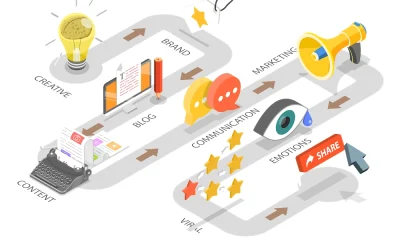Management
Farming Your Client Base

There have been many studies on the variances of ‘farming’ versus ‘hunting’ for customers.
Farming is looking within your existing customer base for new sales. Hunting is the opposite; it is the process of securing new customers.
Is it easier to win the work from existing customers versus new customers? Yes, when you have the skills and knowledge to do it well.
Why is this? The answer is quite simple, your existing clients already know you, and if they return to you, they also trust you.
Your existing customers also have an excellent idea of what you do, what your products are like, and what level of service they can expect from their investment.
Your business has already invested in upskilling its existing customers, so repeat business is less time and resource-consuming.
The sales process can take five or more interactions for new business from new customers to get a prospective customer to buy from you. Prospective customers must first learn about your business before committing to it. It’s this process of ‘hunting’ that excites many salespeople.
Your personality will dictate if you prefer hunting for new business with new clients or growing sales within an existing client base.
Farming in Sales
Farming is all about building and maintaining a good healthy relationship with your customer to ensure you are up to date with their business needs and, just as important, they are up to date with your products and services.
Generally speaking, a well-informed customer is a happy customer; a happy customer is a loyal customer, which is the holy grail of business, having a base full of satisfied, loyal customers.
So what is farming? Let me give you a literal example:
- First, we plough the fields (we identify the customer).
- We sow the seeds (we introduce our product/service).
- We nurture and grow the crop (we build rapport and relationships and identify exactly how we can help their business)
- We harvest the crop (we complete the sale).
- We plough the fields again (we continue to provide excellent service & support).
- We sow the seeds (we continually update them with new products/promotions).
- We nurture and grow (we continue to see how we can help their business).
- We harvest the crop (we complete another sale).
- We plough the fields again (we continue to provide outstanding service & support).
…. and so the cycle continues.
How Do You Farm The Client Base?
Like natural farming, you must spend time cultivating relationships with key decision-makers and influencers within your customers’ organisations. Not all communication is considered equal, nor can you apply the same action to everyone you need to communicate with.
Communications Plan
Create a communication plan for each relationship. For example, for the higher level executives, consider invites to mutually beneficial events. Spending quality time with executives while doing something they enjoy builds the relationship you need to secure new business.
For influencers, you can find out what they like and find opportunities to show them you are thinking of them. A voucher for something they want or an invitation to a VIP shopping evening will go well.
Also, consider how you can introduce your clients to people you know so they work on their relationships.
The following actions also work well when they are personalised so you have a purpose for interaction that is mutually beneficial to your clients and your business.
Entertainment vs. Work Meetings
Take your clients out for a coffee or lunch, and consider a company event for customers. A social gathering will probably be the most expensive option.
Still, it’s perfect for communicating with a captive audience and can be great for getting referrals, especially if you ask them to bring along one of their associates.
Golf competitions, work dinners, inviting critical clients to a charity function, the options are limitless and restricted only by your imagination or your budget.
Today the in-person visit is less important to you or your client. Now there is video chat, e.g., Zoom, and other online comms tools. However, you will want to ensure you’ve got a few in-person catch-ups throughout the year, but these may be more entertainment orientated rather than business meetings.
When farming clients, ensure all interactions are well-prepared so you reach your goals. Know beforehand when you will take ‘shop’ versus more general conversation and rapport-building communication.
Never miss a chance to ask your client how your product/service has been helping their business. All feedback is welcomed, even if it is negative. Knowing where you can improve is better than finding out your client is looking to replace your business with a competitor service or product.
Ideally, always seek to understand before being understood. In other words, find out if there is anything you can help them with, then talk about your reason for calling or meeting with them.
Blogging
Your blog is your go-to online business asset for publishing company updates, relevant news, and views that interest your clients. Write a weekly blog post, or more often if appropriate, on a topic that interests you and your clients.
Share the articles and blogs on your social media profiles, and you can also use these posts as snippets in your newsletter. The best way to do this is to add a title, a couple of sentences, and a click-through link. Your email subscribers can click the link to your website to continue the blog post and visit other pages, including your online shop.
Summary
The farming analogy is not all that familiar to most people now as we are not land farmers. However, we can appreciate the work of a farmer and associate that with the actions required to build relations with existing customers.
Identify who you need to communicate with regularly and formulate a communications plan to do it using various strategies, including meetings, entertainment, and with high-quality content on your blog and in your newsletter.






